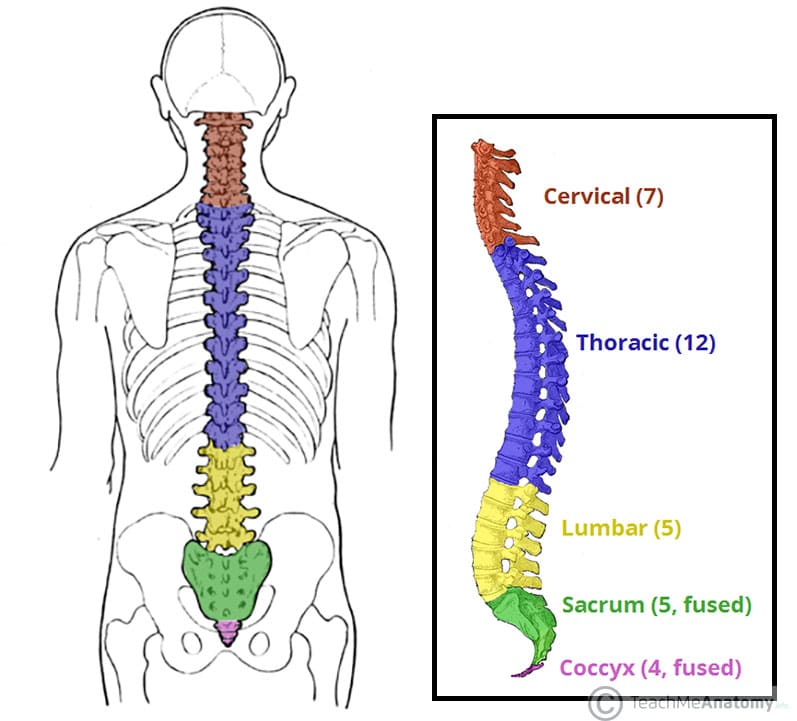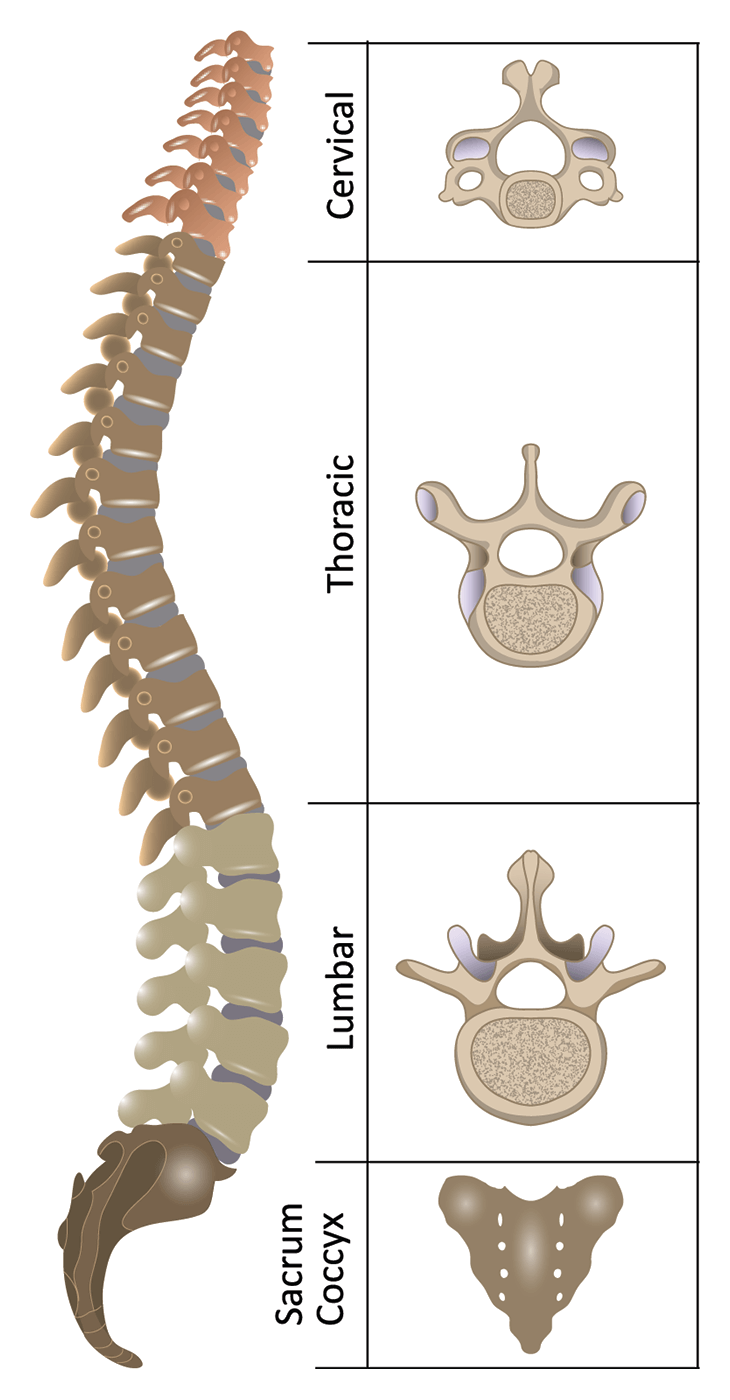
The spinal column is made up of many parts, all designed to help the back move flexibly, support body weight and protect the spinal cord and nerves.

Here the spine is concave, curving toward the belly (lordotic). This area is very flexible and a common location of injuries. Vertebrae can be grouped into four groups: a. Injuries to the bones, ligaments or joints The spine connects to the hip bones at the sacro-iliac joints via a complex arrangement of ligaments.Strain of the large muscles of the back that hold the spine upright.Irritation of the smaller nerves of the spine that involve innervate or supply the discs between the vertebrae, facets and ligaments.Irritation of the large nerves as they exit the bony confines of the spine leading to the arms and legs.While many of us take the benefits of a healthy spine for granted, spinal pain is a sharp reminder of how much we depend on our back in daily life. The spinal column combines strong bones, unique joints, flexible ligaments and tendons, large muscles and highly sensitive nerves. Five bones in the lower back-the lumbar spine.

12 bones in the chest-the thoracic spine.Seven bones in the neck-the cervical spine.The remaining small bones or ossicles below the sacrum are also fused together and called the tailbone or coccyx. The spine is divided into four regions which contain vertebrae: the cervical, the thoracic, the lumbar, and the sacral.Hover over each part to see what they do. Vertebrae are numbered and named according to where they are located in the spinal cord. It is made up of several vertebral bodies usually fused together as one. Interactive Parts of the Spine & Vertebrae Sections. The bottom of the spine is called the sacrum. Sometimes a person may have an additional vertebra, which is called a transitional body and is usually found at the sixth level of the lumbar area (labeled L6). These vertebrae protect the brain stem and the spinal cord, support the skull and allow for a wide range of head movement. By the time a person becomes an adult most have only 24 vertebrae because some vertebrae at the bottom end of the spine fuse together during normal growth and development. The average person is born with 33 individual bones (the vertebrae) that interact and connect with each other through flexible joints called facets. The spine is composed of 33 bones, called vertebrae, divided into five sections: the cervical, thoracic, and lumbar spine sections, and the sacrum and coccyx. The spine supports about half the weight of the body. Structural support for the body, allowing us to stand upright.

It provides several important functions, including: The human spine is a complex anatomic structure that is the scaffolding for the entire body.


 0 kommentar(er)
0 kommentar(er)
